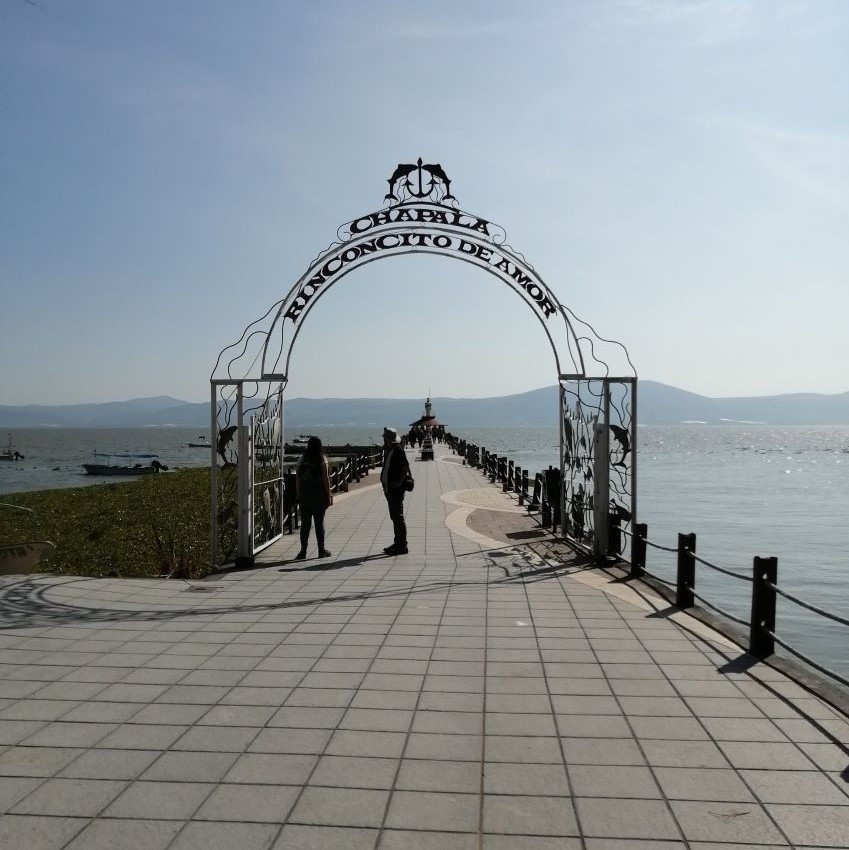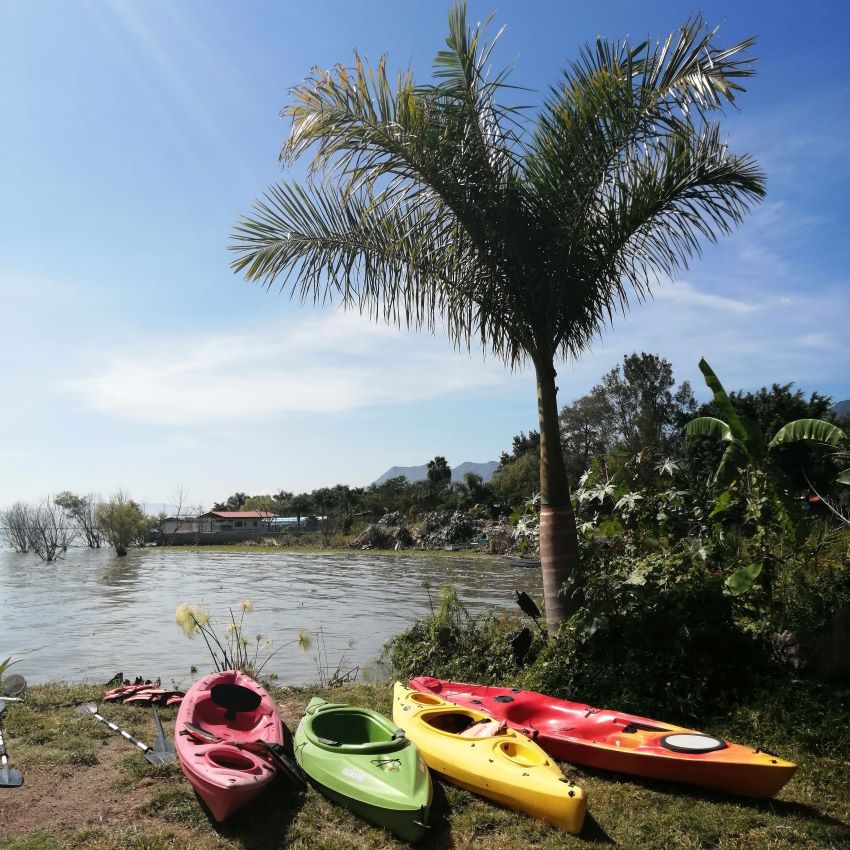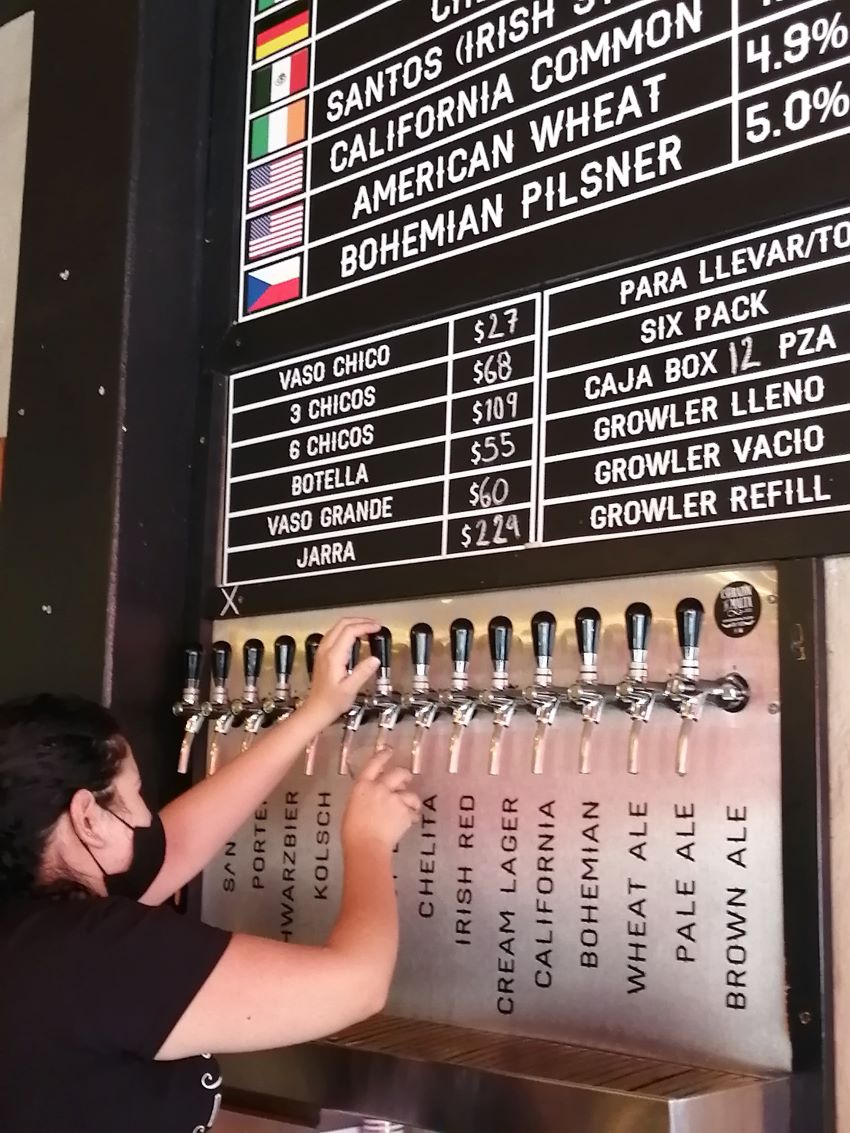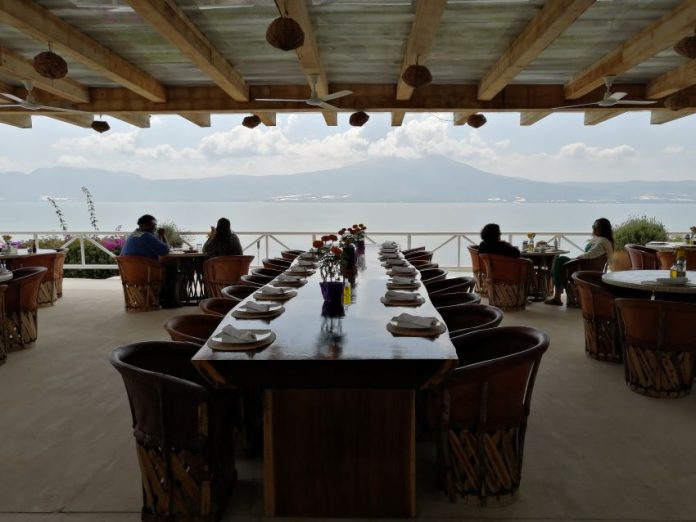In these pandemic times, when the coronavirus has made us all a little wary of taking public buses or airplanes, the iconic road trip is making a comeback. You’ll see it featured in most travel sites these days as a viable option for getting away and staying safe.
I thought I would try it out myself when I was presented recently with a weekend trip opportunity to Lake Chapala, Jalisco, with friends. The great thing about a road trip when you have time is to linger and to make pit stops at roadside cafes.
Our first stop on the way out of the city had to be La Marquesa, an over 4,000-acre national park in México state outside the city limits.
The park has lots of beautiful nature and horseback riding, but like all the best things in Mexico, it’s also known for its food. Lots of little stands line the highway as you pass through, with more inside the park. They are all similar in what they offer and charge, so it’s just a matter of choosing which place looks most appealing.

We drank steaming hot bowls of oyster mushroom soup, ate buttery tacos de barbacoa and had quesadillas with tinga de pollo (shredded chicken) inside. It was what we needed to set off with real determination on the six-hour road trip ahead.
While the hearty breakfast kept us from needing to stop for lunch, we dawdled a good bit along the route, stopping to take photos of the burnt orange- and deep amber-covered valleys of Michocán. Michoacán is one of the largest flower-growing states in the country, providing tons of tercipelo rojo and cempasúchil flowers that are so common during the Day of the Dead holiday. I could already imagine the trucks overflowing with these holiday flowers in the market in a few days.
We also stopped for a look at Laguna de Cuetzao, the country’s second-largest freshwater lake (Lake Chapala being the first). Bright white egrets stalked for fish at its marshy edges, and herds of cattle waded into the water’s edge to cool off in the midday heat. We made a mental note to come back soon to explore the lake in greater detail.
Arriving in Chapala around 7 p.m., we just missed the final rays of sunset over the lake, but the back deck of our Airbnb did provide an excellent view.
The house was great, if a little heavily religious in the decor, and for US $125 a night we had four bedrooms, each with their own bathrooms. We also had a large dining and living room and great views of Mexico’s biggest lake from the two large patios – one off the main dining room and the other a private deck connected to the master bedroom. We were about a 10-minute walk from the shoreline of the lake and so decided that the following day we would explore what the town had to offer.
The next afternoon, we headed out to the town’s popular malecón (boardwalk) which, while populated by tourists, was not overrun on this Friday afternoon. The water’s edge here doesn’t exactly make you want to take a swim, but there is something distinctly vacation-y about a cool breeze off the water and palm trees lining the sidewalk.

We took a stroll through the town’s market (that borders the malecón), also calmer and more enjoyable than when we returned the next day (Saturday) for a last-minute purchase.
The market is famous for its outrageous micheladas (beer combined with various different mixers and condiments) and cocktails that arrive at the table with an outrageous myriad of garnishes and overall “flair.”
The group ordered a cecina michelada with about a half-pound of dried beef sticking out of the top, a piña colada complete with blue gummy candies and slices of pineapple, a pink panther (the same as a piña colada but with some kind of pink mixer in it) and a regular michelada, which includes your weight in cucumbers and carrots covered with chile and salt. One is all you need.
There are a handful of moderately priced seafood joints at one end of the malecón and we chose El Quetzal only for its lower music volume, as some of the others were eardrum-popping loud. It turned out to be the right choice – spicy grilled octopus, fried fish fillets, fish egg tacos, and peel-and-eat shrimp.
El Quetzal has a pool in the center of its outdoor patio if you want to take a dip. With average temps almost never dropping below 20 C year-round, you might just want to.
There are plenty of al fresco activities in and around Chapala – bike rentals, boat rides, hot springs – but we decided kayaks would give us the greatest sense of the lake and after a little bit of research we found a place that would rent us kayaks but not force us to take a guide – Hotel Tahawi just a few minutes outside Chapala.

All their equipment was in good condition — lifejackets included — and an hour rowing around was a super steal, around $10.
The lake has a respectable windiness to it, but nothing too difficult to handle, and we paddled up the coastline a few miles, ducking marsh grass and greeting the fishermen out for lobina and tilapia in their john boats. While it’s no Laguna de Bacalar in terms of beauty, Lake Chapala is quite lovely, and I personally would have been happy to spend a few more hours exploring it.
The next day we headed a little further down the road to the Jocotepec malecón, in the town of Jocotepec, which was another world entirely from Chapala’s.
For folks who don’t like the crowds, helter-skelter market stalls and kiddie rides galore, Jocotepec is much more like a coastal park, with soccer fields, a running track, lots of grassy knolls and an eerily beautiful collection of bare-limbed trees stuck midway in the water.
There are stands that sell food and drink, and also one that advertised a spa but wasn’t open when we were there, but they are all constructed with a similar wooden-shack design and have much more space to spread out around them. Plus there were no hawkers of micheladas waving menus in your face and pleading with you to sit down at their locale.
That night, we stayed in San Juan Cosala at the chic La Vita Bella boutique hotel and spa. We had heard about the great hot springs in San Juan Cosala, accessible in various local balnearios and resort hotels, but weren’t sure we were ready to face all those folks maskless. We opted instead for the more intimate setting at La Vita Bella.

On the weekends, their three thermal swimming pools and tiny spa are open only to hotel guests, so we ended up being completely alone for our couples’ massage and a long dip.
During the week, non-guests can purchase a day pass for about $15 that gives you access to the pools and the rest of the hotel facilities, as well as a day-spa pass which includes a massage, breakfast and lunch for about 50 bucks.
For an even greater variety of pools and experiences, you can head up the road to La Vita Bella’s sister hotel Monte Coxala. Built in the 1980s, it’s a bit kitsch, but it’s immaculately maintained.
There are all kinds of options for relaxing — the sauna and thermal pool inside a massive Olmec head, a sauna inside a glass-roofed pyramid and several pools nestled away in the greenery of their property; there’s an infinity pool that looks out over the lake and its companion mountain behind it.
That night we decided to skip the Sunday crowds at most of the lakeside dining spots and opt instead for the Brew House in Ajijic. Owned and operated by craft beer brand Corazón de Malta, it was the balm to our quarantined souls – flights of three or six different craft beers, above-average bar food and a handful of customers nicely spread out. We ended up buying an assorted case of 12 beers to take home and they were easily drunk by the time the sun set.

The hotel has a Grecian whitewashed facade and 12 simple but elegant suites. It’s high on a hill away from most noise of the surrounding towns. A musical cricket was our only companion as we ended the evening out on our balcony enjoying the fresh air – free from Mexico City smog.
We took in breakfast with a view the next morning in La Vita Bella’s open air dining room and took one last long look at the lake before heading back to the city. We would hit the hottest part of the drive earlier than on the trip to Chapala, and so we decided to break it up by stopping at La Piedad, a town in Michoacán renowned for their carnitas (honestly the whole state is famous for them).
On the suggestion of a friend, we stopped at Carnitas Simitrio, a small, family-run restaurant right near the Lerma Rver. They sold truly some of the best carnitas I had ever tasted – tender, salty, not too greasy. So much so that we brought a kilo and a half back with us to eat later.
The remaining four-plus hours of the drive seemed neverending, as a return trip often does, but we made it back to the city knowing we had beer and carnitas in tow and felt a little less sad about leaving vacation behind.
Lydia Carey is a regular contributor to Mexico News Daily.
